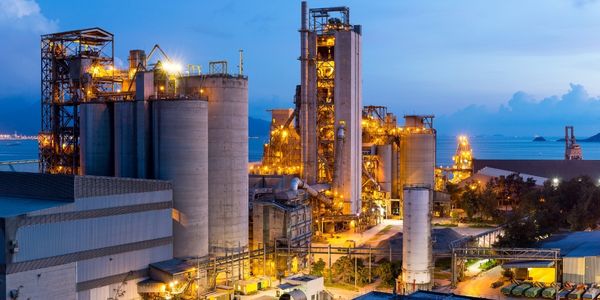Technology Category
- Sensors - Dry Contact Sensors
- Sensors - Proximity Sensors
Applicable Industries
- Buildings
- Cement
Use Cases
- Building Automation & Control
- Construction Site Monitoring
About The Customer
The customer in this case study is the owner of One Financial Center, a 46-story office building located in downtown Boston. The building is one of the larger structures in the area, with two levels underground and a mat foundation resting on dense granular soil. The building's proximity to the Central Artery/Tunnel Project, specifically a 100-feet deep excavation for the tunnel, raised concerns about the potential impact on the building's stability and safety. The building's owners turned to Bechtel/Parsons Brinckerhoff, the project managers of the Central Artery/Tunnel project, to address these concerns and ensure the safety of the building and its occupants.
The Challenge
The Central Artery/Tunnel Project, also known as 'The Big Dig', was a massive undertaking in Boston, Massachusetts, aimed at replacing the Interstate 90 roadway. The project involved constructing a new seven-mile, 8-10 lane roadway and various interchanges, most of which were to be built 70 feet beneath the city. However, the project posed significant challenges due to its proximity to some of the largest and oldest buildings in downtown Boston. One such building was the One Financial Center, a 46-story office building located just 25 feet away from a 100-feet deep excavation for the tunnel. The building's owners were concerned about the potential effects of the excavation on the building's stability. The excavation process involved a 'de-watering' step, where water was removed from the dig site and surrounding soil. This could cause the ground to compress, potentially leading to building settlement, structural stress, and damage.
The Solution
To address these concerns, project managers Bechtel/Parsons Brinckerhoff enlisted the help of Weidlinger Associates, Inc. to conduct a study of the de-watering effects and the deep excavation. The solution involved performing a simulation of the interaction between the existing building structure/foundation, tunnel construction, adjacent buildings, and ground using ANSYS/Mechanical software. This software allowed the team to simulate building conditions at 13 different stages of tunnel construction. By doing so, they were able to ensure the safety of the building and the construction site, and ease the concerns of both the building owners and occupants. The use of ANSYS/Mechanical software provided a comprehensive understanding of the potential impacts of the excavation on the building, allowing for proactive measures to be taken to prevent any damage.
Operational Impact

Case Study missing?
Start adding your own!
Register with your work email and create a new case study profile for your business.
Related Case Studies.

Case Study
Energy Saving & Power Monitoring System
Recently a university in Taiwan was experiencing dramatic power usage increases due to its growing number of campus buildings and students. Aiming to analyze their power consumption and increase their power efficiency across 52 buildings, the university wanted to build a power management system utilizing web-based hardware and software. With these goals in mind, they contacted Advantech to help them develop their system and provide them with the means to save energy in the years to come.

Case Study
System 800xA at Indian Cement Plants
Chettinad Cement recognized that further efficiencies could be achieved in its cement manufacturing process. It looked to investing in comprehensive operational and control technologies to manage and derive productivity and energy efficiency gains from the assets on Line 2, their second plant in India.

Case Study
Intelligent Building Automation System and Energy Saving Solution
One of the most difficult problems facing the world is conserving energy in buildings. However, it is not easy to have a cost-effective solution to reduce energy usage in a building. One solution for saving energy is to implement an intelligent building automation system (BAS) which can be controlled according to its schedule. In Indonesia a large university with a five floor building and 22 classrooms wanted to save the amount of energy being used.

Case Study
Powering Smart Home Automation solutions with IoT for Energy conservation
Many industry leaders that offer Smart Energy Management products & solutions face challenges including:How to build a scalable platform that can automatically scale-up to on-board ‘n’ number of Smart home devicesData security, solution availability, and reliability are the other critical factors to deal withHow to create a robust common IoT platform that handles any kind of smart devicesHow to enable data management capabilities that would help in intelligent decision-making

Case Study
Commercial Building Automation Boosts Energy Efficiency
One of the challenges to building automation is the multitude of non-interoperable communications protocols that have evolved over the years. Buildings have several islands of automation. Bridging the islands of different automation without losing the considerable investment in each specialized control network is the main focus in this solution.




